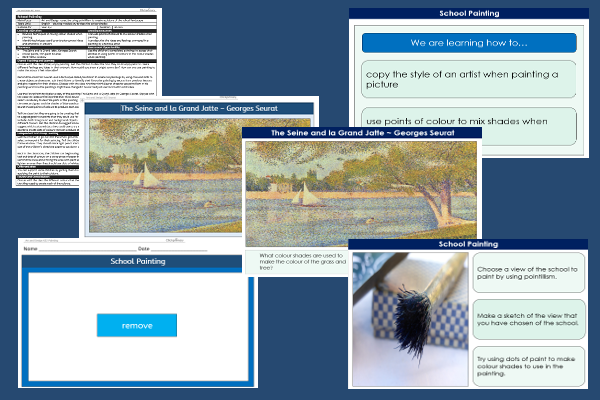Lesson Five – School Painting

This art and design teaching pack for Key Stage Two gets the children to practise using the painting technique of pointillism to create a picture of the school landscape by combining dots painted with different colour shades.
The class can utilise the skills that they have been testing in previous lessons to create their own artwork of the school landscape to match the style of painting by Seurat.
Download this teaching pack including a lesson plan, classroom activities and an interactive presentation to practise using the painting technique of pointillism to create a picture of the school landscape by combining dots painted with different colour shades
Activities in this teaching pack include a display poster to identify and describe colour shades and themes used in artwork by a significant French artist and a template to select and record a view of the school’s landscape to use in their artwork.
The interactive presentation gets the children to explore how to use the painting technique of pointillism to create a picture of the school landscape.
This lesson is part of an art and design scheme of work to get the children to identify, describe and replicate the painting style of a significant French artist by using pointillism to create scenes of different landscape views. There are teaching activities for shared learning, differentiated worksheets to support independent learning and interactive presentations to introduce concepts and key skills.
-

Length Calculations
Practise using number calculations skills for addition, subtraction, division and multiplication when solving problems related to length measurements
-

Maths Calculations Assessment
Assess abilities in solving a range of different number problems for addition and subtraction when working with informal and formal written calculations
-

Determinant Lists
Explain and model how to make lists of objects used and found in different locations to match the correct determinants of a and an
-

English SPAG Assessment
Assess abilities in composing sentences for fiction and non-fiction using the correct spellings, punctuation marks and grammar vocabulary phrases
